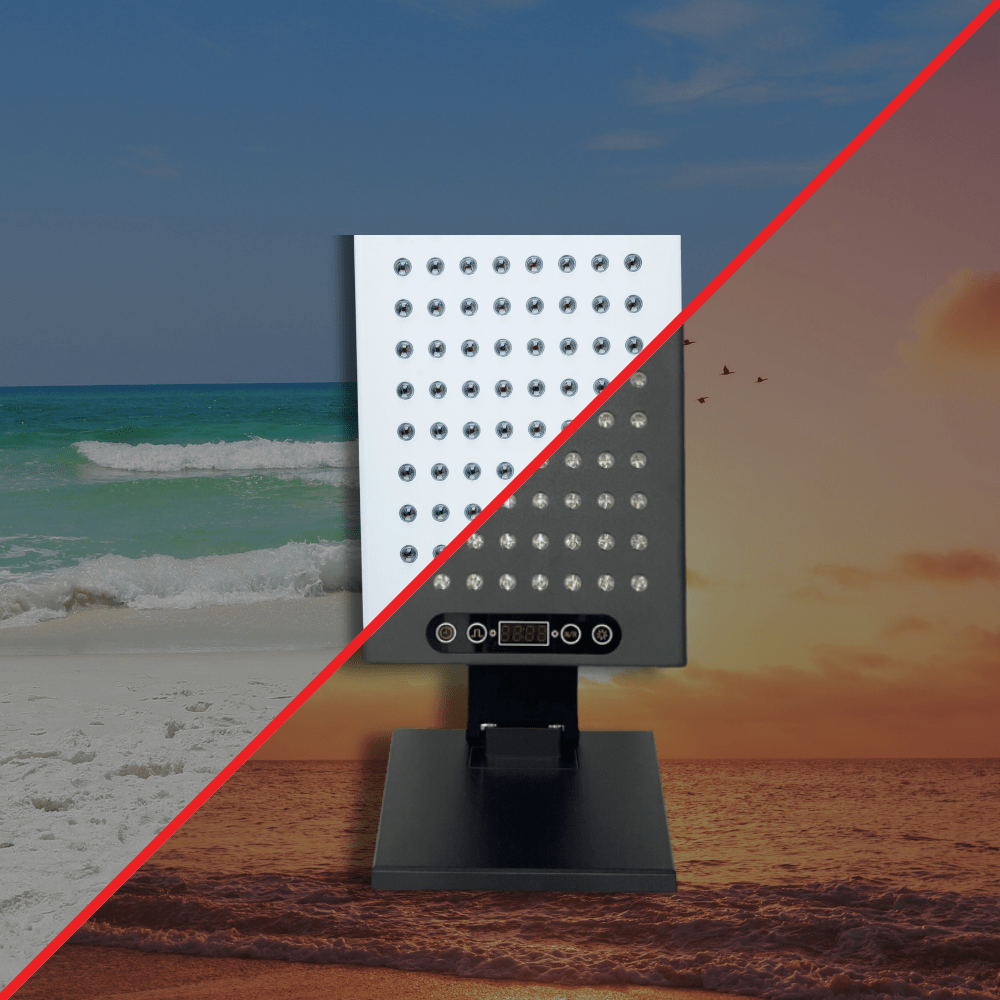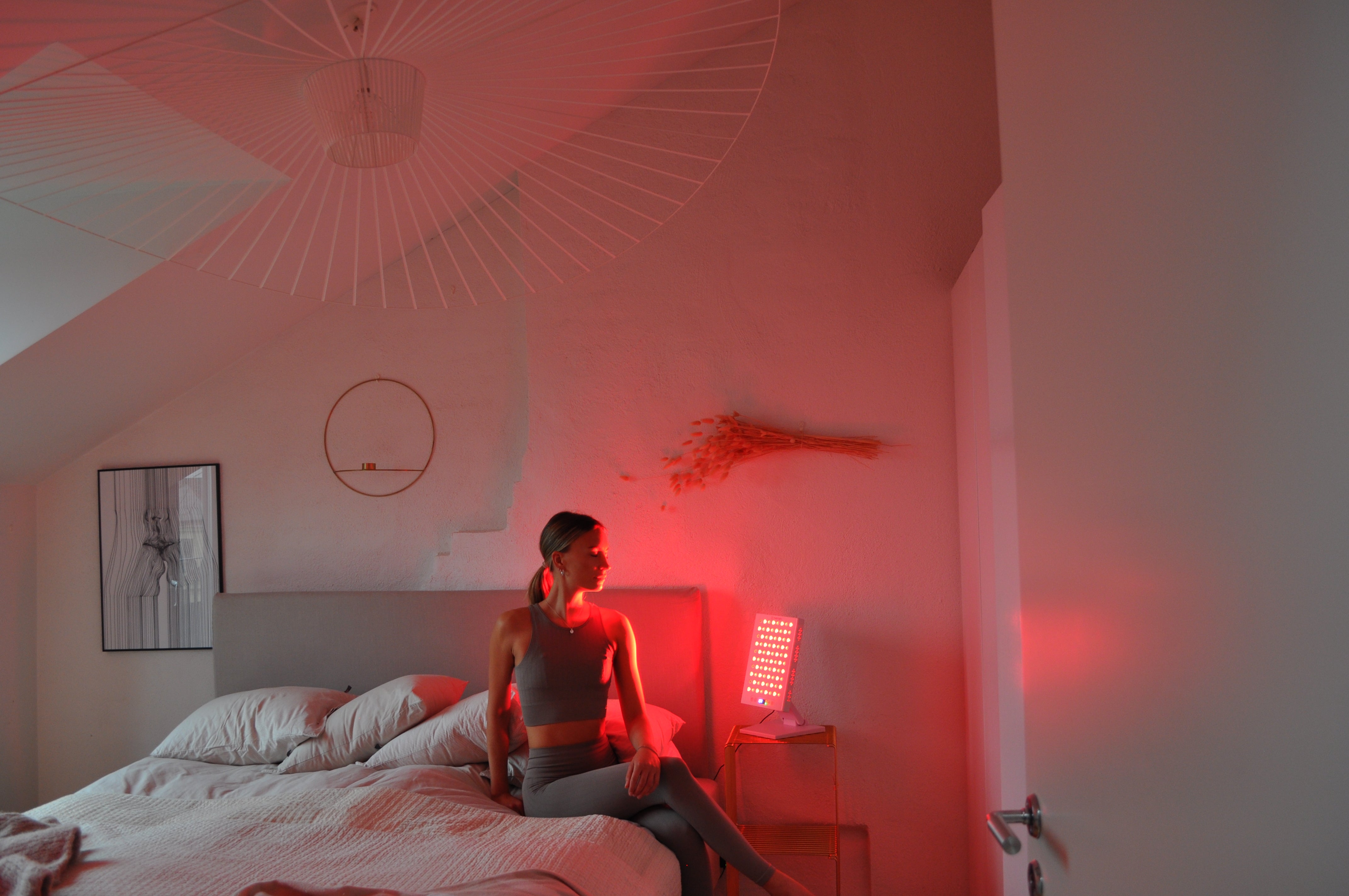Let the light illuminate your heart! Let the light into your heart!
Our heart is the symbol of our emotions and physiologically it naturally has a central role in our bodies. Together with the blood vessels, they supply all the body's cells with nutrients and oxygen, while waste products and other unwanted substances are transported away. Therefore, it is of utmost importance to keep blood vessels and the heart in the best condition. There is much you can do through lifestyle choices to optimize your heart and vascular health. Much of this you probably already know, but a newcomer in the health arena is light therapy with red and near-infrared light (NIR).
Important health parameters
There are many markers that are important to keep track of for heart health. Blood pressure, which is measured with a blood pressure cuff, and cholesterol levels, which are measured with blood tests, are two such markers. These can have a significant impact on our cardiovascular health over time. Lifestyle, genetics, and actually also where you live on Earth can in turn affect these values. Apart from genetics, there is much you can do with lifestyle, and it doesn't actually have to be particularly difficult. Read on and you will get some simple tips that are easy to put into practice.
Lifestyle for the heart is usually about the right amount of exercise, minimizing stress, and getting enough sleep. With diet, you can also do great things for your heart. Contrary to what many might think, there are actually effective dietary strategies that don't require much effort to implement. Because it is important that the changes you commit to making become permanent, and therefore it is important that they are not completely unreasonable to maintain in the long run. They should even contribute to your enjoyment and quality of life so you benefit on all levels.
Food for the heart
Foods like fresh garlic and foods containing sterols can positively affect cholesterol levels. Garlic is excellent in dressings and spreads. Sterols are found in foods such as cabbage, brown rice, buckwheat, and pistachios. This doesn't mean you need to live on buckwheat porridge and broccoli, but of course, it's good to include these foods in your diet. If it feels unreasonable to maintain in the long run, you can make it simpler than that: if you cook rice at home – choose brown rice! Want to snack with chips – swap them for pistachios!
Fibers are also positive for these values, and the most effective fibers are the soft, soluble ones.
These fibers are what we find in chia, psyllium, and flaxseeds. Oats, many fruits, and grains also contain some of this substance. The soluble fibers are recognized by the fact that they form a gel in water, which some describe as giving a "slimy" texture. A both tasty and healthy way to consume these is through chia pudding, in which pleasure and benefit are combined!
Blood pressure is also affected by diet. It has been observed that a too low intake of minerals such as calcium, potassium, and magnesium can raise blood pressure. The solution is to eat more vegetables and fruit, preferably fresh. Celery stalks, fresh garlic, and a sufficient amount of omega-3 can also be beneficial for the same. An adequate intake of vitamin D is also an interesting factor for blood pressure.
Light for the heart
It has long been known that there are geographical differences when it comes to risk factors such as blood pressure and cholesterol levels. The closer you live to the equator, the lower the risk of poor values and disease. The closer you get to the equator, the more light people are exposed to on average, and daylight correlates with the level of vitamin D in the blood. However, modern research has shown that vitamin D is not behind this effect, but rather the light itself. Vitamin D is probably mainly a marker for having been exposed to a lot of sunlight, and therefore it is easy to misunderstand the connections. In addition, it has been observed that there is a link to sunlight, not only between cholesterol and blood pressure, but also with the risk of premature death due to heart disease. That is why light has become so interesting.
In our cells, there are systems that are activated by light. When these are activated, it leads to a number of positive effects on our bodies. Many anti-inflammatory and healing processes are activated, and therefore it is good to expose oneself to a certain amount of light, preferably daily. One problem with sunlight is that it is not entirely positive. Too much light can damage our cells and increase the risk of, among other things, skin cancer, although it seems that the sun reduces mortality in the mentioned disease. Moreover, UV light does not penetrate very deeply into our bodies, which means it cannot have much effect at depth.
Red and infrared light are the best!
Some wavelengths penetrate deeper than others, and here red visible light and infrared light have the best penetrating effects. Red light reaches a few centimeters into the body, while near-infrared light can reach as far as 15 cm into soft tissues. Additionally, there is so little energy in this light that the body's cells are not damaged. This means avoiding the negative effects of sun exposure while maximizing the positive effects.
The best way to benefit from the positive effects of this light is through so-called RLT, which stands for Red Light Therapy. RLT comes in several forms, ranging from handheld lamps for treating specific areas to lamps that irradiate a larger part of the body. Much research shows that treatment with RLT has positive effects on both blood pressure and cholesterol, but also on actual heart and vascular health. It also seems to protect against arrhythmias and atrial fibrillation. Probably 0-15 minutes per day with a sufficiently powerful panel is enough to optimize the beneficial effects, and it is becoming increasingly popular to use this side-effect-free and effective therapy. The effect is mainly determined by how much of the body is exposed (the larger the better), how long you take the treatment, and the power of the lamps (about 1500 watts is a good benchmark).
References:
Low-Level Laser Irradiation Precondition for Cardiac Regenerative Therapy – PubMed (nih.gov)
The studies and research presented here are conducted by independent researchers and institutes. Nutrilight does not fund these studies and has no connection to their execution. These studies generally concern photobiomodulation and are not specifically related to Nutrilight's products.
Author: Martin Brunnberg






Share:
RLT and blood pressure
RLT and inflammations